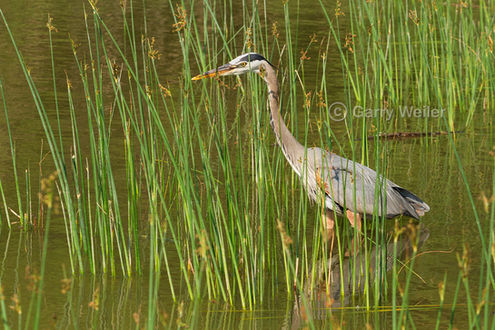GWPHOTOS
Great Blue Heron
I've enjoyed observing and photographing the largest of the heron species in North America, the Great Blue Heron. They are commonly found near wetlands and near the shores of open water in either freshwater or saltwater habitats. They hunt mostly by standing still or walking very slowly in shallow water, waiting for fish to swim near the surface, then strike with lightning speed with their long dagger-like bill. They also hunt from the shore, from floating objects, and in grassland. They most often eat fish but they will also eat amphibians, reptiles, small mammals, insects, and small birds. The specially shaped neck vertebrae allow the heron to move its neck into many positions. Their amazing eyesight is about three times more detailed than ours and includes a binocular vision with a built in zoom lens. Great blue herons can hunt day and night due to a high concentration of eye cells called rod-type photoreceptors that improve their night vision. The male and female look almost exactly the same but the males are slightly larger. Their chest, head and wing plumes give the heron a somewhat shaggy appearance. Hover over image for file number and description, click on image to enlarge.
























